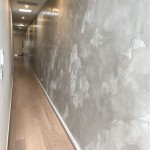Colors of Paint For Interior Designers in Arizona
Arizona, with its diverse landscapes and vibrant culture, offers a unique backdrop for interior design. Choosing the right paint colors is crucial for creating inviting and harmonious spaces that complement the Arizona aesthetic. This article will explore the nuances of selecting paint colors for interior designers in Arizona, considering the state's climate, architectural styles, and cultural influences. By understanding the interplay of color and its impact on ambiance, interior designers can effectively utilize paint to enhance the beauty and functionality of homes and commercial spaces.
Harnessing the Arizona Sunshine
Arizona's abundant sunshine plays a significant role in interior design. The intense sunlight can create challenges in maintaining a comfortable and visually appealing interior environment. Interior designers need to consider the interplay of natural light and paint colors. Light colors, such as whites, creams, and pastels, reflect light, making rooms appear brighter and more spacious. These colors are ideal for maximizing natural light in Arizona's homes. Conversely, darker colors absorb light, creating a cozy and intimate ambiance. While darker colors can work well in certain rooms, it's essential to use them strategically to avoid creating overly dark and gloomy spaces.
Drawing Inspiration from Arizona's Architecture
Arizona boasts a rich architectural heritage, from the rustic charm of adobe homes to the modern sleekness of contemporary designs. The state's diverse architectural styles offer a plethora of inspiration for color palettes. For example, adobe homes, characterized by their earthy tones, often utilize warm browns, terracotta reds, and golden yellows to complement the natural materials. These colors evoke a sense of groundedness and connection to the desert landscape. Contemporary homes, known for their clean lines and minimalist aesthetics, often embrace neutral palettes, featuring whites, grays, and blacks. These colors create a sense of spaciousness and sophistication. Interior designers can seamlessly integrate the chosen color palette with the architectural style to create a cohesive and aesthetically pleasing interior.
Embracing the Arizona Landscape
Arizona's breathtaking landscapes, from the red rock canyons of Sedona to the turquoise waters of Lake Powell, provide a wealth of inspiration for color palettes. The desert's vibrant hues, ranging from fiery oranges and reds to deep blues and greens, can be incorporated into interior design schemes to evoke a sense of place and connection to the natural world. Interior designers can incorporate these colors through accent walls, furniture upholstery, and artwork, adding depth and character to the space. For instance, incorporating a bold turquoise blue into a living room can evoke the refreshing coolness of a mountain lake, while a warm orange accent wall can bring in the vibrant energy of the desert sunsets. The use of earthy tones, such as browns, tans, and greens, can also create a grounding effect, connecting the interior with the raw beauty of Arizona's landscape.
Considering the Room's Functionality
The functionality of a room plays a crucial role in paint color selection. For example, a bedroom designed for relaxation might benefit from calming colors such as soft blues, greens, or lavender. These colors can promote a sense of tranquility and sleepiness. A dining room, on the other hand, might be best suited for warm and inviting tones, such as yellows, oranges, or reds, which can stimulate appetite and conversation. A home office might benefit from invigorating colors like blues and greens, which can enhance focus and productivity. Interior designers need to consider the intended use of each room and select paint colors that complement the specific functionality.
Understanding Color Psychology
Color psychology plays a significant role in how people perceive and react to their surroundings. Interior designers need to understand the impact of colors on mood and behavior. For example, red is often associated with passion and energy, while blue is associated with calmness and tranquility. Green, often associated with nature, can foster a sense of peace and harmony. Yellow is known to stimulate creativity and optimism. By understanding these associations, interior designers can use color to create a desired ambiance and enhance the overall experience of a space.
Staying Current with Color Trends
The interior design world is constantly evolving, and color trends are no exception. Interior designers in Arizona need to stay abreast of current color trends to ensure their projects are fresh and contemporary. This involves researching industry publications, attending design conferences, and following prominent color palettes on social media platforms. Staying up-to-date on color trends allows designers to incorporate fresh and exciting elements into their designs, keeping their work relevant and appealing to their clients.

Interior Exterior Paint Color Consultant Greater Phoenix Arizona

Shades Of Gray Tips For Choosing And Working With A Tricky But Popular Color

Behr Premium Plus 8 Oz 320d 4 Arizona Tan Flat Interior Exterior Paint Primer Color Sample B310416 The Home Depot

Behr Marquee 1 Qt 290d 4 Arizona Matte Interior Paint Primer 145404 The Home Depot

Southwest Color Palette Benjamin Moore

Trending Bohemian Style Paint Colors Certapro Painters Of Gilbert Queencreek

Paint Color Consultations North Scottsdale Consultant Phoenix Az

Behr Premium Plus 1 Qt 320d 4 Arizona Tan Flat Low Odor Interior Paint Primer 140004 The Home Depot

Boho Desert Color Palette Sherwin Williams Interior Paint Scheme E Design

Phoenix Arizona House Tour Home Bunch Interior Design Ideas
Related Posts








